I'm sitting in Jakob Vinther's office, trying to find the right words to formulate the question I want to pose: Did Tyrannosaurus rex have a - and that's a shameful word - penis? "So I have to..." I stammered, getting more and more panicked. "...You have to mate," Professor Winsor responded lightly.
We were at the University of Bristol in England, where Winsor was a professor of macroevolution, specializing in the fossil record. When the conversation resumed, I looked around his room, trying to avoid eye contact with him. He said exactly what my inner child wanted the paleontologist to say.
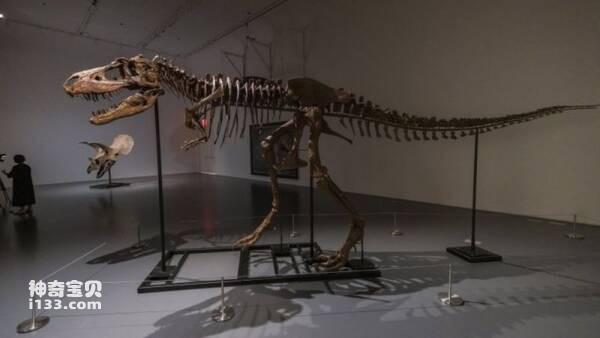
Gorgonosaurus skeleton
Professor Winsor's bookshelf is filled with layers of academic books and collections of papers, mixed with relics from the lost prehistoric world. The entire bookshelf looks like layers of fossil sections. Among these prehistoric fossils, the most striking is an ancient insect fossil, whose delicate wing texture and mottled color are still clearly identifiable. There is also the remains of a vampire squid with well-preserved black ink sacs that still contain melanin. There is also a strange ancient worm that is a close relative of the worms we find on coral reefs today. There was an antique wooden cabinet with drawers in the corner of the room, and I expected that it contained various other interesting animal fossils. This room feels like a cross between a museum and a library.
Just a few feet away from me was the star of the fossil exhibit, psittacosaurus (Greek for "parrot lizard"). This cute herbivorous little-beaked dinosaur, a close relative of Triceratops, lived in the forests of what is now Asia about 133 million to 120 million years ago. The fossil specimen I'm looking at now is famous around the world, not because the fossil retains intact skin, where the striped pattern is even recognizable, nor because it has a distinctive ring of pointed-edged feathers on its tail. Neither of these is what makes this dinosaur fossil famous. What is most famous is that this dinosaur retains a part of its lower body that can be used by future humans to study the mystery of its reproduction (more on this later).
Then I looked back and focused on our conversation. Wensel told me that there was a particularly exciting discovery in the Yixian Formation of Liaoning, a famous fossil site in China. In this formation, which was originally an ancient lake, two Tyrannosaurus rex with complete feathers were found close together. When asked why it is special, the professor said that it is because the pair of dinosaurs lean against each other in a strange posture, which makes people doubt their relationship. In fact, what he wants to know is: Are the dinosaurs mating?
tough questions
Thanks to the development of modern science and technology, scientists are now making astonishing discoveries at a record speed about many subtle truths about dinosaur life, many of which were unimaginable just a few decades ago.
Molecular biology research has determined that 76 million-year-old theropod dinosaurs had red blood cells and collagen. Among this group of dinosaurs was Tyrannosaurus rex, once the largest carnivore on earth. The indicative chemical signatures discovered in this study can explain that Triceratops and Stegosaurus are rare cold-blooded animals among dinosaurs. Another herbivorous nodosaur with spikes and thick armor has an orange-red appearance. Scientists also found that Spinosaurus, known for the "giant sail" on its back, likely used its 15-centimeter teeth and crocodile-like jaws to hunt prey in deep water. There is also evidence that Iguanodon may be amazingly smart and capable of flying. Pterosaurs (of course not dinosaurs in the strict sense, but actually classified as winged reptiles) often walked in search of prey.
However, how exactly dinosaurs mated, or any research on dinosaur mating and reproduction, is completely blank so far. To this day, scientists cannot even accurately distinguish whether dinosaur fossils are male or female, let alone how dinosaurs courted and mated, or what kind of reproductive organs they had. Without these basic knowledge, most of the physiological phenomena and behaviors of dinosaurs will remain a mystery. But one thing is for sure: dinosaurs definitely mated.
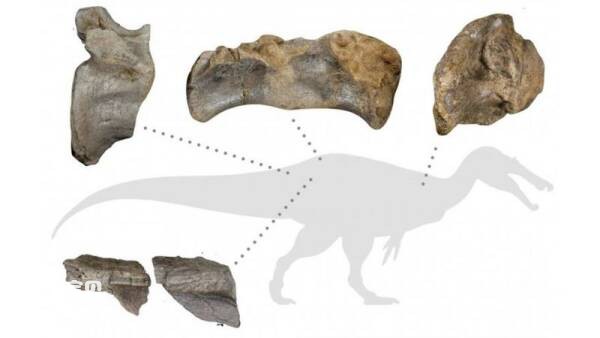
Studying dinosaur fossils can provide insights into the lives of dinosaurs
Returning to the topic of Tyrannosaurus rex fossils, Wensel explained that to solve the mystery of the strange posture of this pair of Tyrannosaurus rex, another ancient lake site, the Messel Pit in Germany, can provide a clue. The Messel Pit was originally a quarry. It later became famous for the discovery of a large number of well-preserved animal and plant fossils. It is now listed as a World Natural Heritage. The preserved remains of plants and animals in this fossil haven look as if they have been squeezed into a book. Fossils discovered so far include fox-sized horses, giant ants, early primates, and several animals with bloated stomachs, including a snake with a lizard in its stomach and a lizard with a beetle. A large number of freshwater turtles were also found, at least nine pairs of which died suddenly during mating. There are several pairs of tails that are still touching during mating. The mating patterns of freshwater turtles in the Messel Fossil Pit have significant implications for Winsel's theory of dinosaur mating.
The reason why the Messel Pit became a prehistoric burial ground for a huge number of ancient animals lies in a poisonous secret. In the geological era of the Eocene (Eocene) 57 million to 36 million years ago, the Messel Crater should have been a volcanic crater filled with steep sides and filled with water, surrounded by dense subtropical forests. There is no scientific conclusion as to how this volcanic lake caused the sudden death of so many animals and plants. There is a hypothesis that the lake still had active geological activities after its formation, and periodically released carbon dioxide mist that could suffocate life into the surrounding area. These unfortunate turtles may have been trapped and killed in a carbon dioxide mist release event, and then sank to the bottom of the lake. Their mating postures were preserved in the oxygen-deficient mud layer for tens of millions of years.
However, these freshwater turtles who were "high in lust" when they died were not exactly in the same position as one riding on the back of the other to mate. Instead, they were facing back to back, as if the two turtles suddenly changed their minds and wanted to Turn away from each other.
Sensing my confusion, Professor Winsor leaned back in his chair and explained that the bodies of mating freshwater turtles should gradually separate after death but remain together because their genitals are still attached. Winther's demeanor and tone suggested that he considered discussing prehistoric animal sex to be a completely normal topic.
Freshwater turtles mating in the Messel Pit return to this bizarre pair of T. rex fossils because there are some uncanny similarities between the two lovebirds. The pair were "separated from each other, but their tails were overlapping," Winsor said. "I think the pair were mating and something happened."
Apart from this, there is no other case evidence, and Wensel admits that his theory is based on high assumptions and is only an unpublished idea so far. There are still many soft organ fossils of dinosaurs that have not been discovered. If the pair of Tyrannosaurus rex were really trapped in ancient copulation, this phenomenon will reveal some information about the soft organs of certain dinosaurs. Yes, that means Tyrannosaurus, and possibly Tyrannosaurus rex, probably had a penis.
sunken lake bottom
However, there is another clearer source of information about the truth about dinosaur sex, a fossil that captured the world's attention with its lower body. This is the aforementioned Psittacosaurus.
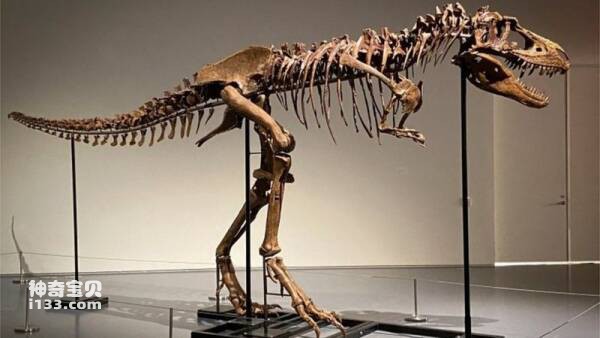
No one knows what position the largest dinosaurs used to have sex. Some people speculate that the male lies on top of the female to mate, but it is not clear how to avoid crushing his partner in this position.
Wenther took me to see this treasure he collected and explained to me the ins and outs behind it.
This is an ancient ecosystem in Northeast China, the Jehol Biota of the Early Cretaceous. Let's assume it's a beautiful sunny day in this temperate land and a little parrot dragon decides to leave its wooded home and head to one of the many lakes in the area to drink and quench its thirst. Measuring 91 centimeters from head to tail and reminiscent of an unusually stocky Labrador retriever, Psittacosaurus was almost an adult but had not yet had any sexual experience.
This parrot dragon walked to the lake on two legs because it no longer walks on four legs as an adult, but then tragedy happened. Just when it bent down to take a sip of water with its parrot beak, it accidentally slipped and fell into the lake and drowned. When it fell to the bottom of the lake, lying on its back in an inelegant posture, its genitals were accidentally preserved for future human curiosity.
Of course, Wenther especially wanted me to see this famous lower body. He pointed to a black round piece of skin under the tail of Psittacosaurus. This was the dinosaur's private parts, which had been preserved through all kinds of hardships since the early Cretaceous. That era was so far away from us, equivalent to a time span of 1.6 million times the average human life span today.
Alas, the Psittacosaurus in Winsor's office is not an actual fossil; what I'm looking at now is a model he commissioned himself to make to full scale. But the model was perfect, meticulously crafted, and the exact stripes found on the original fossil's skin were replicated as accurately as possible, right down to the markings.
So, what information can this little dinosaur’s private parts give us?
First, like its relatives such as birds and crocodiles, this dinosaur had a cloaca. The cloaca, a versatile excretory opening, is common in all terrestrial vertebrates except mammals. This is a separate orifice used for defecation, urination, intercourse, and birth. This is not unexpected, but it is a new discovery that has never been done before.It has been proven that dinosaurs had the same reproductive structure as their evolutionary cousins.
Professor Winsor said, "So you can look, look down here (he pointed to the cloaca under Psittacosaurus's tail) there's a lot of pigment." He explained that this is melanin, which may be responsible for the preservation of this fossil. It worked.
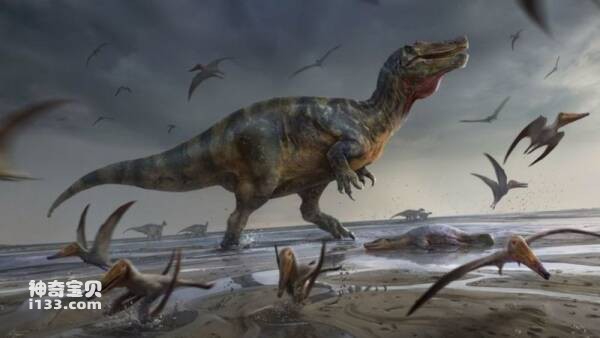
Our understanding of dinosaurs still requires more research
Although we generally only know melanin as the dark compound that gives our skin its color, melanin actually has countless uses in the natural world, from the ink of squid to the protective layer behind our eyes. Melanin is also a potent antibacterial agent and is typically found in high concentrations in the livers of amphibians and reptiles, where its function is to prevent the growth of potentially harmful microorganisms. But crucially, melanin has also been found to play a protective role in many other environments of life.
"For example, insects...use melanin as a kind of immune system to protect themselves from infection. So if you poke a hole in a moth with a needle (which I don't recommend), then you poke the hole Melanin is secreted around the body," Professor Winsor said.
Because of the immune function of melanin, many animals, including humans, have a higher concentration of melanin around the genitals, so the skin in this area will be darker. The same goes for dinosaurs, and so does humans. Looking at this distant relative of ours before me, as one of my colleagues pointed out, I feel as if it is frozen in this position forever as it walks past me, discovering how close dinosaurs are to us. It feels weird.
But there are more interesting discoveries to come, and it’s clear that all of my weirdness so far is just a warm-up, there’s a lot more to come. Before I knew it, Winsor was enthusiastically explaining to me in detail many of the other features of Psittacosaurus's lower body.
"Now we can reconstruct what Psittacosaurus's cloaca looked like, and we can show that it had two lips that opened like this," said Professor Winsor, who spread his fingers to make a V-shape. "There is melanin outside the opening. But the interesting thing is that the melanin is not at the opening (if it is to prevent microbial infection, the melanin should be at the opening), so the melanin is placed outside for publicity and showoff."
If this were true, like baboons showing off their buttocks to members of the opposite sex, it would be unheard of, as such courtships are extremely rare even among modern birds, the descendants of avian dinosaurs. Dinosaurs "used a lot of visual signals," Winsor said, explaining that dinosaurs had excellent color vision. Unlike most mammals, which can only see two colors, birds can see humans as well. In addition to the three colors, ultraviolet rays can still be seen. "But there's no point in birds displaying their cloaca because it's covered in feathers." Likewise, crocodiles rely more on scent to attract mates.
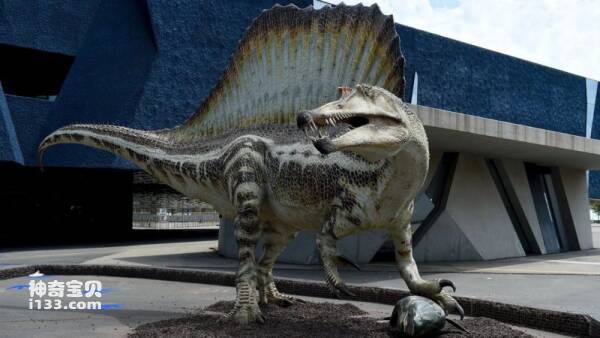
Some experts believe that Spinosaurus only used the sail-like thing on its back as a swimming aid, but it may also be used for courtship.
Winsor speculates that, like birds, dinosaurs may have had excellent color vision, in which case those without feathers might have jumped at the chance to say, "Why not show off your cloaca?"
Unfortunately, we can't tell whether this Psittacosaurus was a male or a female, or what kind of sexual organs it had, because each one was hidden in the cloaca. This leaves two possible mating strategies. Or the so-called "cloacal kiss," in which two dinosaurs are stacked on top of each other and the male ejaculates directly into the female's cloaca, a common mating tactic among birds. Or the more familiar version, which involves the use of a penis, as is the case with crocodiles.
With no further evidence and no other dinosaur cloaca fossils to study, the jury is still out.
Enough has probably been said about dinosaur genitals. What about other aspects of dinosaur mating and reproduction? Will there be a courtship ritual? Like fights between the same sex over the opposite sex, or even elaborate dances? Do males and females look different? How can we tell which features of dinosaurs were designed to attract the opposite sex?
Attract the opposite sex
At first glance, deciphering the mating behavior of a long-extinct animal may seem as impossible a task as finding fossils of its lower body. But Rob Knell, an evolutionary ecologist at Queen Mary, University of London, assured me that there are clues hidden in the collected fossil record.
Nair told me, "One of the things that's been studied about dinosaurs is that they had a lot of weird things, some people call them 'weird structures.' And that's part of the charm of dinosaurs. So, the roulette wheel on Stegosaurus, The large sail on the spine of Spinosaurus, the frills and horns on Triceratops and other ceratopsians, and the large crest on Hadrosaurus could all be considered sexually selected traits."
For 200 years, scientists have debated the function of these bizarre structures in dinosaurs, often with outlandish theories, such as the idea that the hadrosaur was an aquatic animal and that its head crest served as a snorkel or air chamber. Sometimes the appearance of a dinosaur is too strange to be believed. For example, when the Tyrannosaurus rex fossil was first discovered in 1900, it was found that its forelimbs were too small compared to its huge body, so it was not believed to belong to the Tyrannosaurus rex itself. It was originally thought to be the skeleton of another dinosaur.

Deciphering the mating behavior of long-extinct animals may seem as impossible a task as finding fossils of their lower bodies
But Nair explained that in the past, paleontologists were reluctant to interpret these weird shapes as tools to attract the opposite sex or compete with the same sex. They could speculate that this might be the ultimate purpose of dinosaurs, but it seemed impossible not to prove this hypothesis. Not a scientific attitude.
"The disc-like thing on the back of Stegosaurus is an example," said Susannah Maidment, a senior researcher in palaeontology at the Natural History Museum in London. "Or the tubular crest on the head of the duck-billed dinosaur could also be the reason for the For example... we don't know what they are used for."
Then entered the era of contemporary scientific research. Back in 2012, Nair decided to take a closer look at the problem. He is particularly interested in studying oddball traits that closely resemble the mating behavior of animals around the world today, or that cannot be explained by other theories. For example, the head horns and frills of Triceratops and its close relative Psittacosaurus (Psittacosaurus has unusual side spikes on its cheeks), such as the head crest of the predatory dinosaur Diplosaurus, which has a prominent ridge above each eye. ridges, in addition to the long necks of giants like Diplodocus and the feathers of the dinosaurian ancestors of birds.
Although there was no clear way to determine what these strange body structures were used for, Nair and an international team of scientists soon realized that telling clues could be found in animals living today, and of course you One has to know where to look.
One way to look for it is through sexual dimorphism, which is when the males and females of a species look very different. The two sexes of animals rarely differ completely in terms of lifestyle and survival strategies, so if different physical characteristics appear, it is usually to allow males to directly attract females (such as the male peacock's colorful feather cloak) or to compete with the same sex for the right to mate (such as the male peacock's colorful feather cloak) antlers of a stag).
Unfortunately, this particular hint doesn't do much to understand the sex lives of dinosaurs, because scientists can't yet distinguish between males and females, and even if they find differences between individual fossils, they can't tell for sure whether they're seeing dinosaurs of different sexes, or not. Different branches of dinosaurs.
This leads to the next tip. If a certain feature only appears in adult dinosaurs and not in infants or juveniles, this feature is usually for sexual reproduction, just like the mane of a male lion is considered to be a sign that the male is ready for sexual mating. . However, getting started with research can be tricky.
As early as 1942, scientists unearthed an astonishing new skull dinosaur fossil in Montana, USA. It obviously belonged to a terrible predatory dinosaur, but compared with the ultimate predator king, Tyrannosaurus rex, it was Relatively small and slender. The team concluded that this was an adult dinosaur of a new species, and after decades of debate, the discovery was eventually named Dwarftyrannosaurus. Over the next few years, several more possible skeletons of this so-called dwarf tyrannosaurus were discovered.
Then in 2020, a scientific team took a closer look. They analyzed the skeletons of two possible dwarf tyrannosaurs and realized that they might not be a different species from Tyrannosaurus rex at all. They were Tyrannosaurus rex, but one that died in adolescence before its body was fully developed. Tyrannosaurus rex. In fact, there is a misunderstanding because these smaller juvenile Tyrannosaurus rex look so different from the adult Tyrannosaurus rex that they almost look like they are really two unrelated species, each occupying their own place in the prehistoric food chain. unique location.
Tyrannosaurus rex wasn't the only species to evolve huge developmental changesdinosaur.
Maidment said, "There's a big debate about Torosaurus and Triceratops." "Although the two dinosaurs look very similar, the former had a very large skull, one of the largest among land animals, and had a huge ring-like ruff on its neck with huge holes in it. The latter is much smaller in stature, and the smaller neck ruff has no holes.
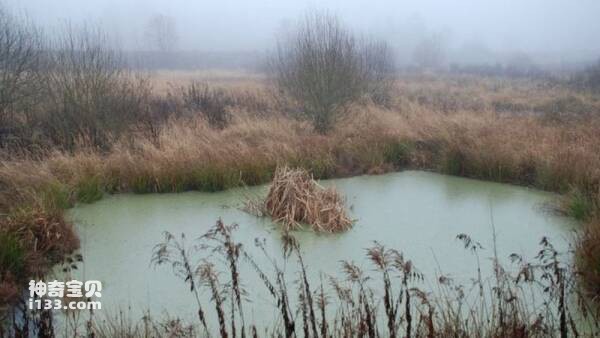
The Messel Crater fossils were formed tens of millions of years after the dinosaurs became extinct, but they can still reveal information about how prehistoric animals mated.
Maidment said, "These are two dinosaurs that lived in the same area at the same time, both in North America at the end of the Cretaceous. Some people think that Torosaurus is a later version of Triceratops, and some people think that they are They are two different species." She also cited other variants that some believe are just different life stages of Triceratops. "Some people argue that these are different species, but in fact, it is possible that they are just Triceratops at different stages of ontogeny. Dragon. But no one really agrees."
Therefore, this strategy of identifying sexual characteristics may not be effective. But luckily there is another way, and that is to model other aspects of this body structure that might be useful.
"All we can do is say, OK, this is consistent with a structure evolving for this purpose (mating) and inconsistent with a structure evolving for any other purpose," Nair said.
The giant frill of Triceratops is one example. For years, generations of scientists have puzzled over the giant physical features of Triceratops, with speculation ranging from protecting its neck from predators to regulating its body temperature to simply doing it. Triceratops provided places for muscles to connect so that Triceratops could swing its head horns more powerfully.
Recently, it has been suggested that neck frills may have been used to help Triceratops identify members of its own group. So Nair and his colleagues did further research and found that this idea was not feasible because there was little variation in the frills between different species of Triceratops, so it was unlikely that this was the purpose for which the frills evolved. Since this theory may not be true, it is reasonable to speculate that its true purpose was to impress other triceratops or fight off other males for a chance to mate.
The evidence is coming. In a 2009 study, researchers analyzed injury patterns on the skulls of several Triceratops and found that they were consistent with injuries from fights with other Triceratops. Researchers may have uncovered the lingering legacy of ancient animal mating competitions.
Are there other courtship and mating rituals? Could a male Tyrannosaurus rex actually have twisted its tiny forelimbs to attract females to mate, as the producers of the TV show "Prehistoric Planet" recently suggested? Is it possible that pachycephalosaurus butted its heads to win in a mating battle? Would male velociraptors build elaborate pergolas to please the opposite sex, perhaps choosing only the bluest berries to decorate their masterpieces?
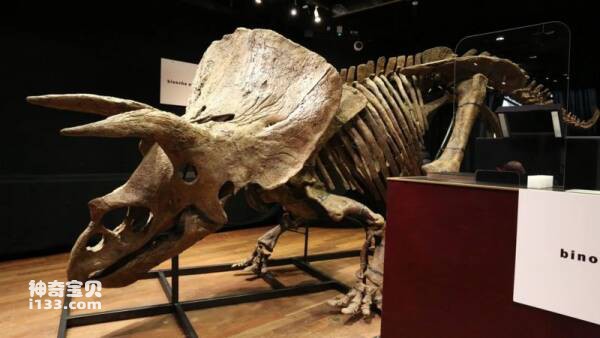
The huge frills on the neck of Triceratops have always been thought to be a protective tool against predators, but is it possible that they were actually used for courtship?
Nair believes that, broadly speaking, there should be other courtship and mating rituals. He points out that there are many similarities between dinosaurs and birds, and that in fact, today's birds are direct descendants of their ancient feathered dinosaur cousins, just with extra beaks and missing teeth. As a result, avian dinosaurs were more similar to today's birds. Velociraptors, for example, looked more like ferocious turkeys than the smooth-skinned carnivores featured in the Jurassic Park movies.
Nair said, "If you look at birds today, you'll see that birds display a wide range of courtship styles. So why couldn't dinosaurs do the same? There's no reason to think that some of the weirder traits of dinosaur matings weren't passed down to birds... So, I think dinosaurs had weird ways of mating."
Surprisingly, it's even possible to find physical evidence of dinosaurs' bizarre courtship behavior. In 2016, scientists digging in Colorado discovered some strange rock beds that almost resembled ancient puddles.
However, closer inspection revealed clear scrapes and three-toed footprints in the rock bed, tracks left by predators such as Tyrannosaurus rex during the Cretaceous period. These marks are not accidental undulations on the land surface but were made by dinosaurs and look like enlarged versions of the marks left by ostriches today.
Female ostriches are difficult to please and can be very picky lovers, so the male ostrich must perform a complex courtship dance to make the female fall in love. The complex courtship ritual also includes a vigorous wing-flailing sprint and a "ground-scraping ritual" to demonstrate their digging skills, a skill required to build a nest on the ground. Researchers believe that scratches left on the Colorado rock bed indicate that Tyrannosaurus rex may have performed the same courtship behavior 100 million years ago.
However, Nair believes we may never know the bizarre details of most dinosaur mating rituals. Even living relatives of dinosaurs, such as various birds of paradise, have a variety of mating rituals. "Even if you try to predict, you're not going to get very far," he said.
However, in recent years, humans have gained many previously unimaginable insights into the lives of dinosaurs. Who knows, maybe in a few decades, with the advancement of technology and the growth of knowledge, the perverted and weird courtship methods of dinosaurs will be deciphered by humans one by one. At that time, the amount of information in this area will be unsettling. Yes, we'll also know what dinosaur genitalia looked like then.
animal tags:
We created this article in conjunction with AI technology, then made sure it was fact-checked and edited by a Animals Top editor.